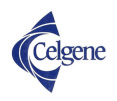|
2:20 p.m.
 
How to Improve Subject Retention and Accuracy of Data for Clinical Trials by Implementing Electronic Patient Reported Outcomes (ePRO) and Clinician Reported Outcomes (ClinRO)
The FDA issued guidance on the use of ePRO in Dec 2009. The decision to incorporate ePRO in clinical trials is multifaceted and must be considered carefully by the study team. Consensus by the team must be achieved prior to embarking on the use of ePro. Consideration must be made with the patient population that is targeted and how the ePRO tools may be used to enhance subject retention. Additionally, Clinician Reported Outcomes (ClinRO) is a hotly-debated industry topic and should be considered early in the design process and may influence how the data will be presented.
This session will share key criteria for utilization of ePRO in a trial and patient considerations, including:
- Pointers for discussion items and decisions to be considered
- Engagement of the sites for using the ePRO in a clinical setting
- Criteria for adopting ClinRO in clinical trials and the advantages and disadvantages
- Potential impact on budgets and resourcing using ePRO and ClinRO
Elizabeth Kurkimilis, Senior Clinical Operations Manager
Celgene
2:50 p.m.

Idea Exchange: Questions, Feedback, Collaboration
2:55 p.m.

Afternoon Refreshment & Networking Break
3:05 p.m.
 
Collaboration For Patient Enrollment
To Optimize Patient Recruitment Spending
Only 6% of patients that respond to a recruitment advertisement end up enrolling into the study – for many reasons. Unfortunately, the industry loses 94% of these highly motivated patients due to a lack of technology to match those patients to other trials that sponsor is conducting.
This session will review the Referral Plus™ program that programmatically matches patients who disqualify from one study to others they may qualify for using a proprietary geo-therapeutic matching algorithm.
The ReferralPlus program has expanded into an industry-wide collaboration of over 20 pharmaceutical companies and CROs to help optimize patient recruitment spend while improving the chances for patients to find studies they qualify for.
The Referral Plus™ program provides:
- Sponsors an opportunity to leverage patient recruitment budgets across multiple studies
- Patients a much higher probability of qualifying for a study
- Sites additional options to provide to patients
Case studies from the original three pilots will be presented showing significant reductions in cost per randomized patient and cycle times.
 Lisa LaLuna, Sr. VP, Corporate Development & Innovation Lisa LaLuna, Sr. VP, Corporate Development & Innovation
ePharmaSolutions
3:35 p.m.
 
Building a Bridge between Central Recruitment and Your Sites for Optimal Patient Engagement
Sponsors invest a good deal of time, effort and resources into the selection of sites and yet it’s a common meme in the industry to expect failure in more than half. In fact, fifty percent of clinical research sites enroll one or no patients in their studies. (Pierre, "Recruitment and Retention". 2006) To supplement these efforts, sponsors turn to centralized recruitment and retention providers to fill in the gaps and accelerate enrollment. But is this model working? Not often. The current model is broken, pitting centralized recruitment and retention one-size-fits-all strategies against the sites in an unhealthy competition to claim patient accruals.
There is a better way. In this presentation, you will examine how early planning and coordination between sites, sponsors, and the CRO can shift the model to one that embraces clear responsibilities and shared goals to reduce site failure and improve patient engagement for optimal recruitment and retention.
In this session, you will learn how to:
- Embrace a “no site left behind” mentality that encourages proactivity vs. contingency planning
- Employ a new model for providing holistic centralized support
- Harness the unique strengths of sites and central recruitment vendors to optimize enrollment timelines and eliminate wasteful overlap in budgets
- Eliminate competition between central support and your sites to shift focus where it belongs: the patient
 Angela Radcliffe, VP, Director Clinical Trials Angela Radcliffe, VP, Director Clinical Trials
Hudson Global
 Deborah Tyler, Senior Clinical Study Manager Deborah Tyler, Senior Clinical Study Manager
Takeda Development Centers America, Inc.
|







